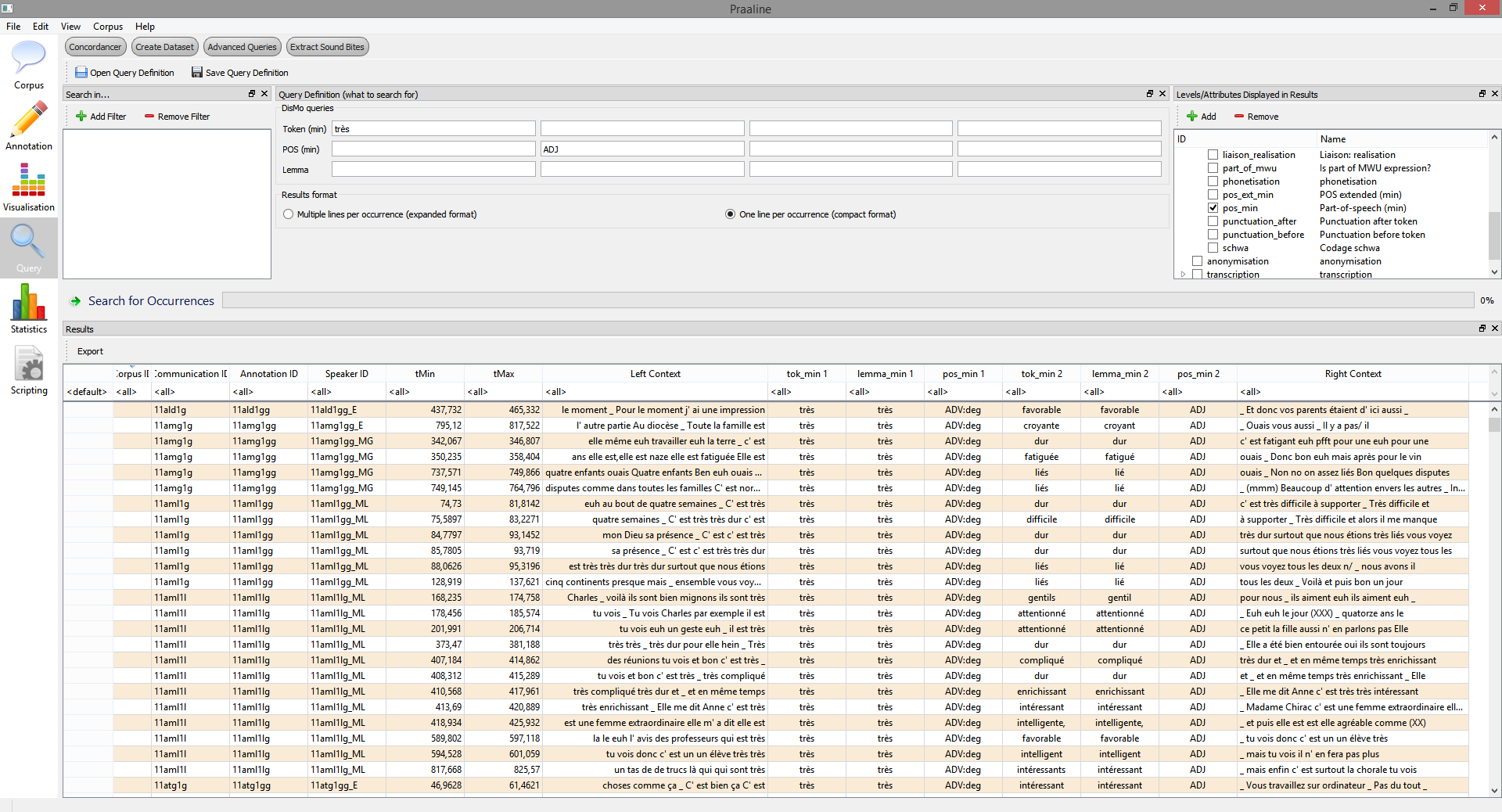Corpus annotations are stored in a relational database, the schema of which is dynamically constructed based on the annotation structure definition. Annotation levels correspond to database tables and annotation tiers to columns. The relationships between the different levels are also encoded. Praaline simplifies the conversion of structured annotation into two-dimensional tables suitable for statistical analysis. SQL queries can be used to select and summarise a subset of the corpus.
It is possible to construct a Dataset by an interactive query editor. For each attribute, functions can be applied to calculate aggregate measures (e.g. sum, mean, standard deviation, etc.); a filter can be used to limit the returned values; and a normalisation transformation (e.g. z-score over all samples of the same sub-corpus) may be applied. In this way, researchers may more easily explore and analyse the information in the corpus, in an interactive way and without necessarily resorting to scripts.
Furthermore, concordances can be extracted using Praaline, based on simple value filters or regular expressions (search term, left and right context). The results of such queries are objects that can be further processed, using the statistical analysis module, or exported for use with other software. The concordance builds and executes the necessary series of SQL queries dynamically, based on user input. The results of a simple concordance are shown below:

